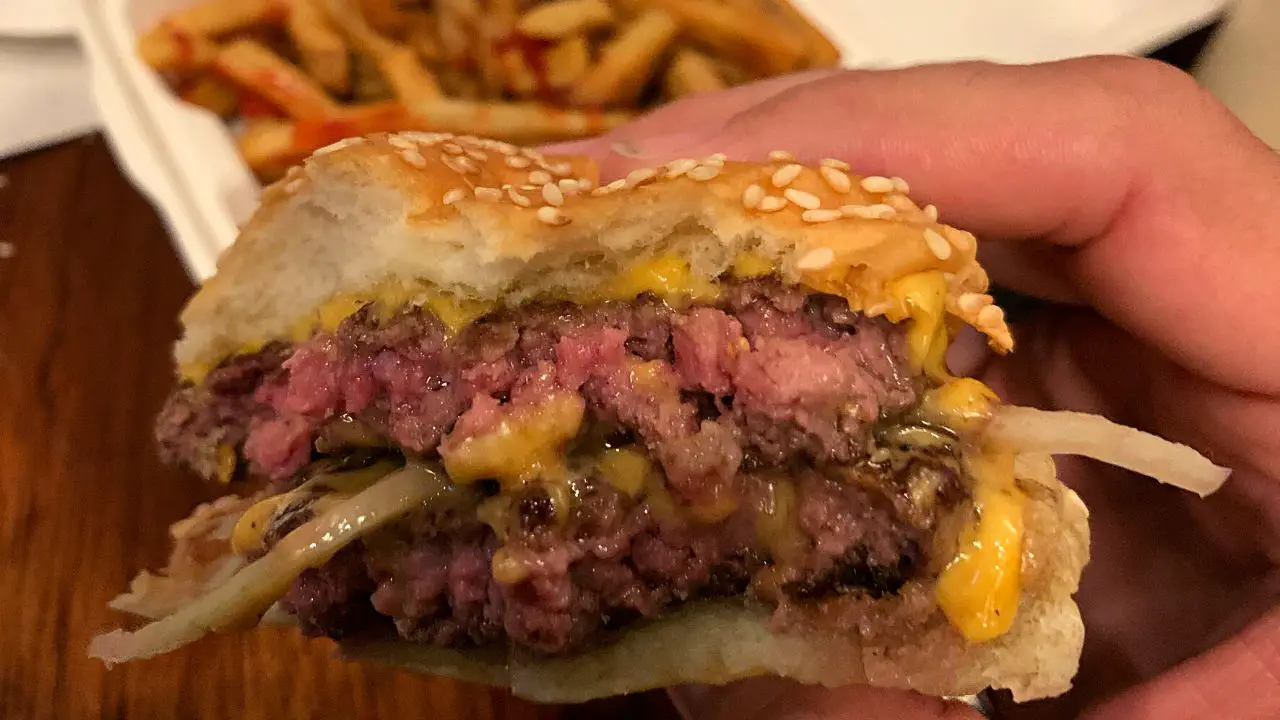You’ve just taken a big bite of your juicy burger, only to realize that it was pink in the middle, and now you are feeling uneasy about it. Will I get food poisoning? Is it going to give me indigestion? What should you do?
Firstly, don’t panic, and let’s see what you can expect if you ate a burger that was rarer than you expected.
Ever wondered about the risks of eating undercooked hamburgers? Check out the video below to learn more.
Note: In this article, I will discuss beef patties, not chicken burgers. As with beef burgers, there can be some level of debate about how well they should be cooked, whereas chicken burgers must always be well done. For safety, the chicken burger must be cooked to an internal temperature of 165°F (75°C).
Is There A Difference Between Rare And Raw Hamburger?

The question may sound silly—any chef, home cook, or meat enthusiast knows the difference between rare and raw. However, it is always worth repeating since the line between both can be blurry sometimes, literally and figuratively.
A rare burger is exposed to heat until it reaches an inner temperature of 125°F (52°C). Likewise, a medium-rare burger is exposed to heat for a bit longer until the center of the burger patty gets to 135°F (57°C).
In contrast, the burger is considered raw if the inner temperature has not reached the minimum temperature threshold [1].
Of course, if you are eating a burger you didn’t cook yourself, the odds are that you won’t be able to measure the temperature. Instead, it’s plausible that you may try to judge it according to appearances—but unfortunately, this approach is not the most accurate.
Color is not a reliable indicator. Some burgers remain pink even when carefully cooked, and some rare meats take a brownish hue. The most accurate indicator you should really trust is temperature [2].
However, if the visual examination is the only option, then you should depend on the following doneness levels:
- If the burger is red inside, it is raw to rare.
- If the burger is pale pink in the middle, it is medium-rare to medium.
- If it has dull-brown interiors and a firm texture, the burger is well done.
The above doneness levels should correspond to the following temperatures:
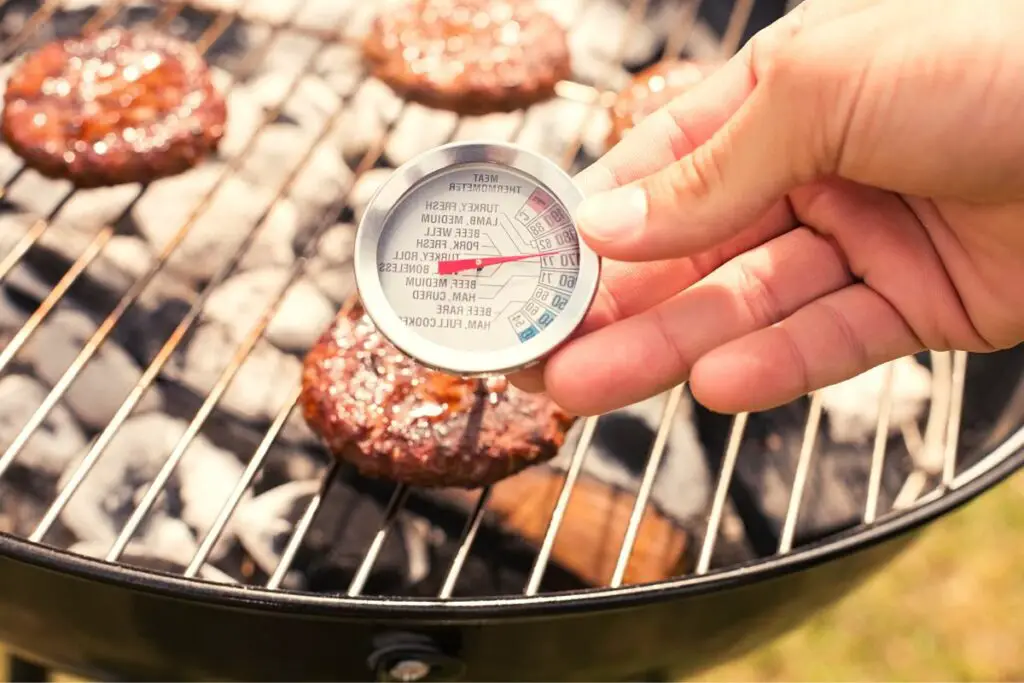
Insert the meat thermometer into the burger—make sure it won’t go all the way through as it needs to be at the center to get an accurate reading.
- At 125°F (52°C), the burger is rare.
- At 135°F (57°C), it’s medium-rare.
- 145°F (63°C) is medium.
- 155°F (68°C) is medium-well.
- 160°F (71°C) and over is well done.
Struggling with burgers that are either too pink or as dry as the desert? Check out this cheap digital thermometer below. It’s a game-changer for cooking not just burgers but any kind of meat to perfection.
TAP ON THE IMAGE TO CHECK THE PRICE
Regardless, it does not really matter much whether or not you get to the specific temperatures because both rare and medium-rare hamburgers could pose a health risk.
Can Rare Burgers Make You Sick?
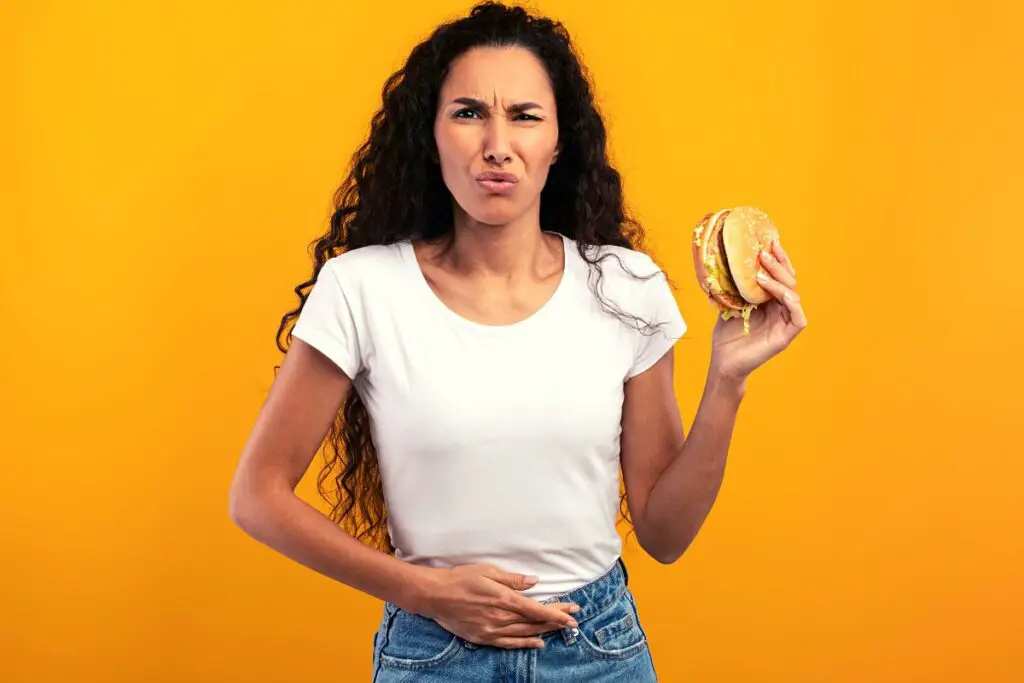
Yes. Eating a rare burger poses a health risk that is best avoided as it could induce food poisoning or other illnesses. Likewise, you are exposing yourself to harmful bacteria such as salmonella, e. coli, or listeria [2].
Of course, it is NOT a common occurrence—there is a big possibility your rare burger is not contaminated and won’t cause you any problems.
According to food-safty.com, the chances of you getting food poisoning from undercooked beef burgers are the following:
That works out to odds of 1:50 of a burger-lover getting an E. coli O157 infection during his lifetime, but only to 1:800,000 odds of him being infected on a single eating occasion.
food-safety.com
However, if you’re unlucky enough to get a rare patty already thriving with bacteria, the low cooking temperatures of your hamburger won’t make any difference since it will NOT be hot enough to kill it. Thus, you may end up with food poisoning [3].
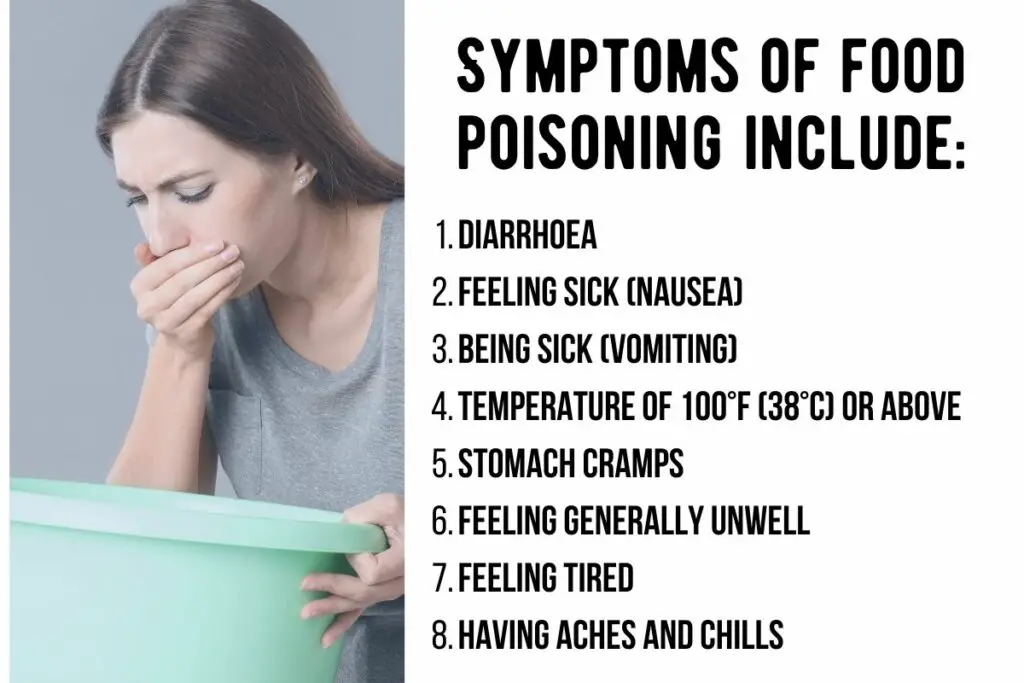
Rest assured, most likely; you will be fine. Even if you do end up getting sick, odds are you will get better within 12 to 48 hours, in the worst cases scenario, in a week. You can usually treat yourself at home, but it’s essential to ensure good hydration until you get better, meaning, drink a lot of water.
If the symptoms are severe or won’t improve after a few days, make sure to immediately seek medical attention.
Likewise, it may be safer if people with delicate stomach conditions, young children, and elderly adults avoid eating rare, medium-rare, or even medium burgers.
Why Are Rare Steaks OK but Not Rare Burgers?
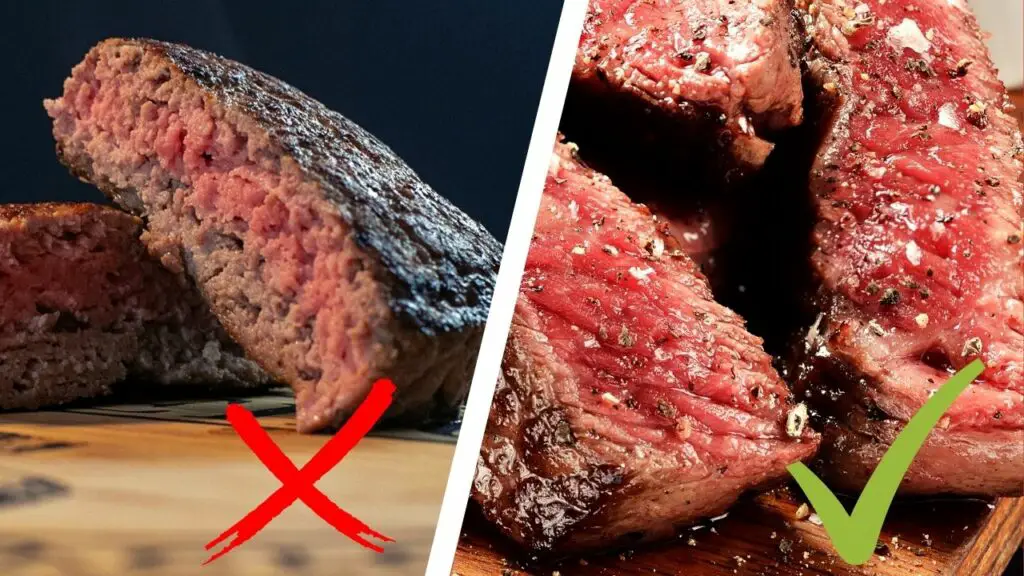
The odds are that you—or someone you love—may have enjoyed a rare steak for years without any health consequences. But unfortunately, burgers are not the same. So, why can you eat rare steak but not rare hamburgers?
The explanation is quite simple.
The harmful bacteria that can make you sick live only outside the steak—so the inside of fresh meat should be free of bacteria and sterile. Since there is no risk of bacterial contamination on the inside, high enough heat exposure will easily kill any harmful pathogens outside without worrying about the inside temperature [4].
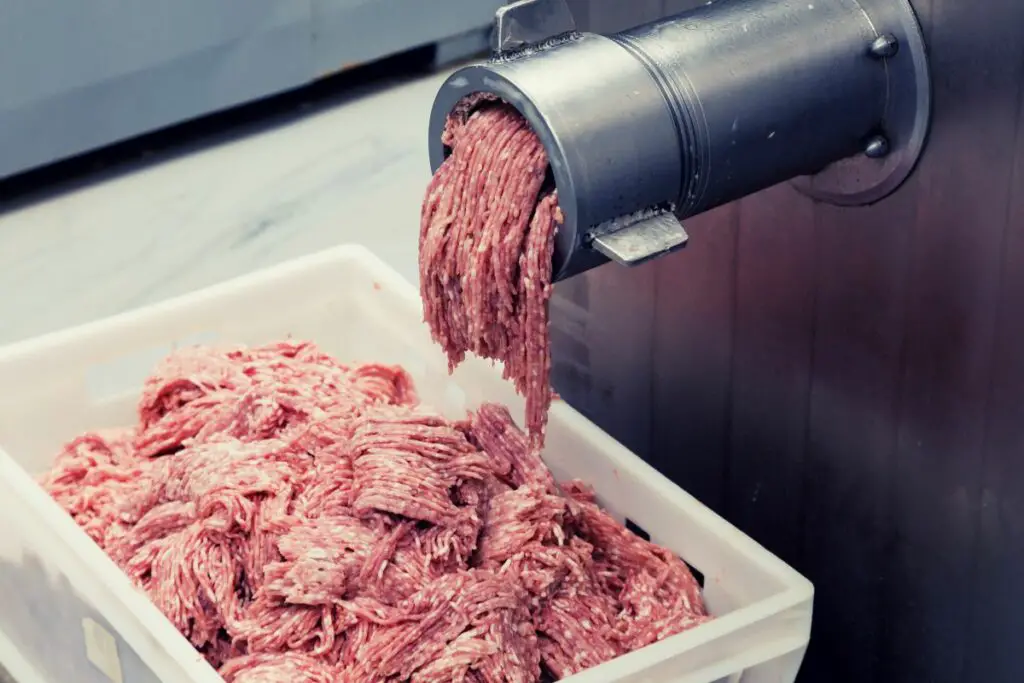
On the other hand, burgers are made with ground meat. Minced/ground meat is often composed of multiple cuts, and if the burger happens to be made with meat harboring bacteria on its surface, the pathogens will mix and disperse throughout the ground meat in the mincing process [4].
To be on the safe side, the right approach would be to treat your burgers as you would the surface area of your steak—that is, expose it to the heat required to kill all potential pathogens throughout.
But that said, it is not always that there are harmful bacteria lurking on the meat’s surface, and if that is the case, your ground beef will also be fine.
But unfortunately, there is no way of knowing really what meat was used to make your burgers or the cleanliness of the meat processing plant, so eating an undercooked or raw burger always poses some level of risk.
Luckily, plenty of government agencies have established safety guidelines to follow when it comes to burger preparation. So, let me summarize these below before you start cooking.
Read Also: Licking Fingers After Eating Food – Good, Bad, Or Dangerous?
What Do Food Safety Standards Say About Eating And Serving Rare Burgers?
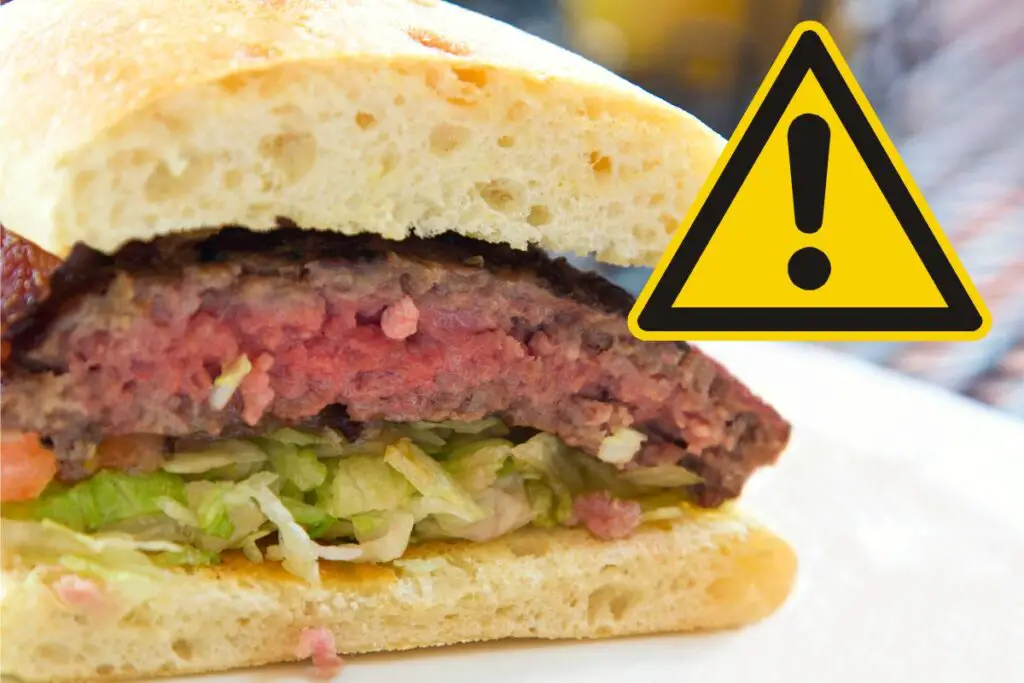
The U.S. Department of Agriculture (USDA) explains that all hamburgers should be thoroughly cooked until they reach the inner temperature deemed safe and high enough to destroy bacteria. For beef burgers, this is 160°F (71°C), and for chicken and turkey ones, it sits at 165°F (74°C) [5].
Likewise, the USDA specifies that it is not safe to partially grill burgers and finish cooking them later, as it will accelerate bacterial growth. It is best if the meat remains hot until served.
Not only do they discourage rare burgers, but also undercooked meat as a whole—including steaks [6].
Other countries have the same concerns yet offer different methods of protection and preservation.
For example, in the United Kingdom, the Food Standards Agency (FSA) established three options to guarantee safe burgers to the final consumer.
- The first is thorough cooking.
- The second is the removal of surface contamination before mincing.
- And the third is monitoring the supply chain to minimize contamination before cooking [7].
To ensure thorough cooking, the FSA demands food establishments to cook the burger with the proper time and temperature combinations—if the heat is high, the time is short, and vice versa.
For example, burgers can be deemed safe if cooked for 6 seconds at 80°C and also if cooked at 60°C for 45 minutes [7].
For those aiming to enjoy rare or medium-rare burgers, the FSA advises going for the second method—removal of surface contamination.
Despite sounding complicated, anyone making their own minced meat and homemade patties can do it easily by searing the meat as if it were a steak before mincing it. This approach thus prevents contaminated layers from blending with the rest of the meat [7].
The last method listed—supply chain monitoring—is only safe and viable for food establishments.
As you can see, official agencies agree on the risks but not on methods and preparations, which leads to confusion and contradicting instructions.
Nonetheless, if you wish to err on the safe side, your best bet would be to ensure your burgers are, from now on, well done.
How Do I Keep My Well-Done Burger Juicy?
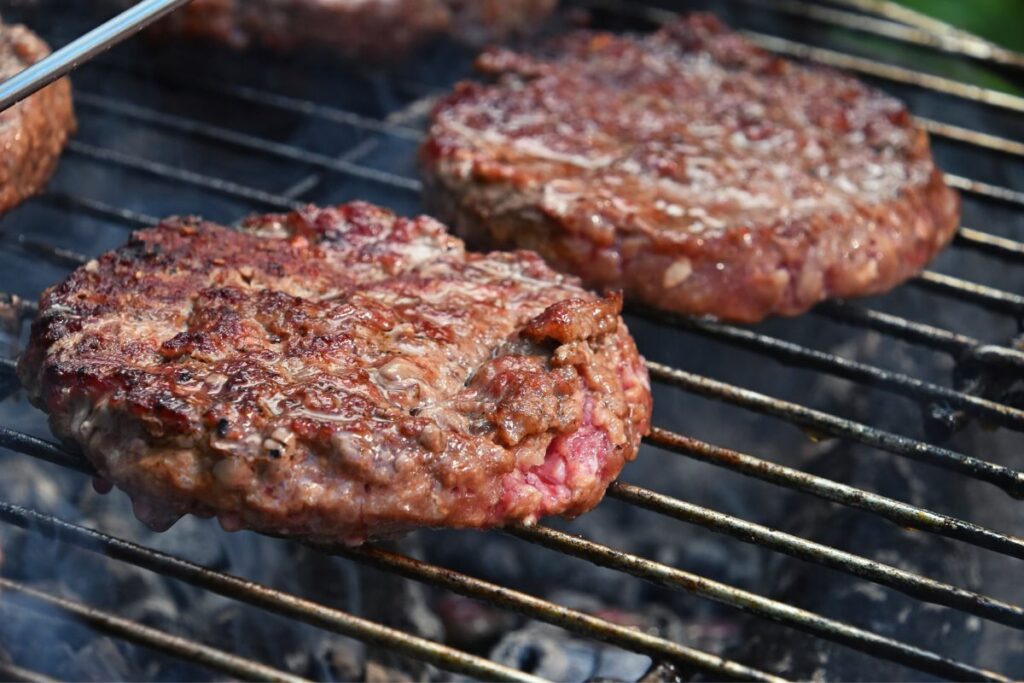
Most people enjoy rare or medium-rare burgers because of the juicy and tender texture. However, your well-done hamburger does not have to be dry and tough.
One of the easiest ways to make a well-done patty juicy and moist is by including extra fat in the mixture. Butter or mayo are popular options, but Greek yogurt is just as efficient an alternative [2].
Another technique is to include an ice chip in the center of the burger [2]. As the patty cooks, the heat will melt the ice and prevent the meat from drying out, restoring any lost moisture immediately.
Finally, keep in mind that your cooking technique matters. Compressing the burgers during the cooking process will push the juices out of your burger and, sadly enough, away from your mouth.
Read Also: How To Reheat White Castle Burgers (Keep Them Juicy And Tasty).
Conclusion: You Will Be Fine, But Is It Worth It?
So, you ate a burger that was pink in the middle. There is a chance that eating a rare or medium rare burger may expose you to an unpleasant foodborne illness.
Statistically, the odds are you will seldom get it, and if it happens, you will recover with no further issues, but it is nonetheless a bad experience no one wants to go through.
Despite how tempting it may be to taste a juicy pink burger, many food safety authorities discourage the practice and deem it unsafe.
Keep your burgers well done and use some clever cooking tips to prevent fat and moisture loss—your stomach will thank you for keeping it safe.
Sources:
- [1] Angus Beef (n/d). Degree of Doneness. Retrieved from https://www.certifiedangusbeef.com/kitchen/doneness.php
- [2] McCallum, Katie (2021). Medium Rare Burger: How Pink Is Too Pink When It Comes To a Ground Beef? Retrieved from https://www.houstonmethodist.org/blog/articles/2021/oct/medium-rare-burger-how-pink-is-too-pink-when-it-comes-to-a-ground-beef.
- [3] Moyer, Kristen and Seladi-Schulman, Jill (2020). What Temperature Kills Bacteria in Water and Food? Retrieved from https://www.healthline.com/health/what-temperature-kills-bacteria.
- [4] Foods Standards Agency (2017). Burgers. Retrieved from https://www.food.gov.uk/safety-hygiene/burgers.
- [5] Van, Diane (2017). Food Safety for Hamburgers and Tailgating. Retrieved from the U.S. Department of Agriculture at https://www.usda.gov/media/blog/2011/09/09/food-safety-hamburgers-and-tailgating.
- [6] U.S. Food Safety and Inspection Service. (n/d). Ground Beef and Food Safety. Retrieved from https://www.usda.gov/media/blog/2011/09/09/food-safety-hamburgers-and-tailgating.
- [7] Food Standards Agency (2016). The safe production of beef burgers in catering establishments: advice for food business operators and LA officers. Retrieved from https://www.food.gov.uk/sites/default/files/media/document/lttcupdatedguidance.pdf.
